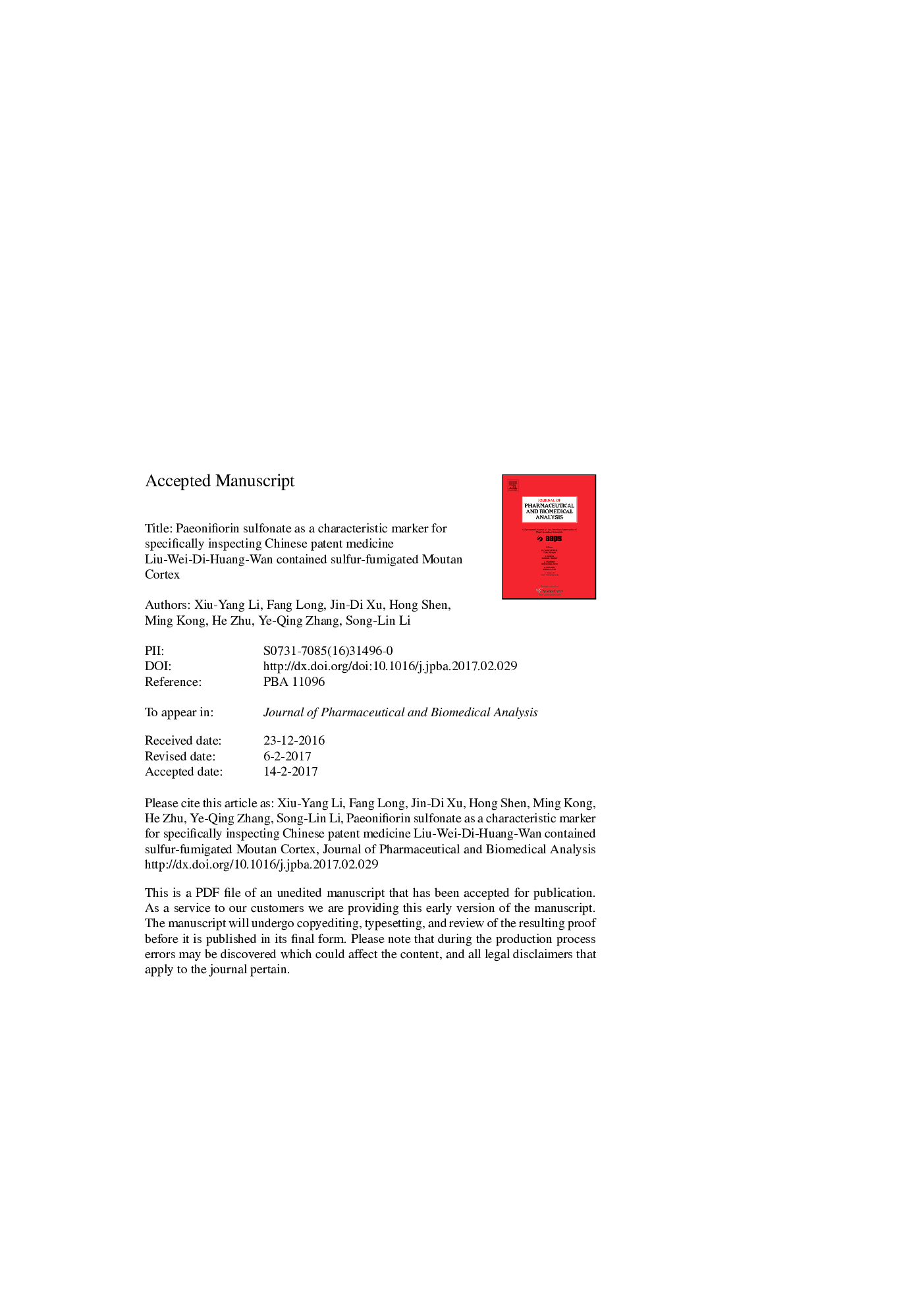| Article ID | Journal | Published Year | Pages | File Type |
|---|---|---|---|---|
| 5138196 | Journal of Pharmaceutical and Biomedical Analysis | 2017 | 25 Pages |
Abstract
Sulfur fumigation can induce chemical transformation of bioactive components, consequently the alteration of bioactivities or even toxicities of medicinal herbs. Inspecting Chinese patent medicines (CPM) contained sulfur-fumigated constituent herbs is crucial for ensuring the safety and efficacy of CPM. Paeonifiorin sulfonate is a sulfur-fumigation induced compound of Moutan Cortex (MC), one of the main constituent herbs of a commonly used CPM Liu-Wei-Di-Huang-Wan (LWDHW). Herein, we investigated the approach of paeonifiorin sulfonate as a characteristic marker for specifically inspecting LWDHW potentially contained sulfur-fumigated MC (SFMC). First, mimic LWDHW samples contained SFMC (SFMC-LWDHW) and non-fumigated MC (NFMC-LWDHW) were prepared respectively. Second, an LC-MS method was developed and validated to qualitatively and quantitatively determine paeonifiorin sulfonate in the mimic LWDHW samples. Third, the established method was applied to analyze the commercial LWDHW samples. The results showed that paeoniflorin sulfonate could only be detectable in SFMC-LWDHW, but not in NFMC-LWDHW samples. The CPM matrix could enhance the response of paeoniflorin sulfonate in mass spectrometry analysis. In addition, the LOQ, linearity, precision, accuracy and stability were also demonstrated to be acceptable for quantifying paeoniflorin sulfonate in LWDHW. Commercial samples analysis indicated that paeoniflorin sulfonate were detectable in 9 of 10 commercial LWDHW samples, with the content varied between 105.53 μg/g and 438.61 μg/g. All the results suggested that paeoniflorin sulfonate could be used as a characteristic and reliable chemical marker for specifically inspecting commercial LWDHW contained SFMC. This study also provides a new strategy for the quality control of other CPMs potentially produced from sulfur-fumigated constituent herbs.
Keywords
Related Topics
Physical Sciences and Engineering
Chemistry
Analytical Chemistry
Authors
Xiu-Yang Li, Fang Long, Jin-Di Xu, Hong Shen, Ming Kong, He Zhu, Ye-Qing Zhang, Song-Lin Li,
